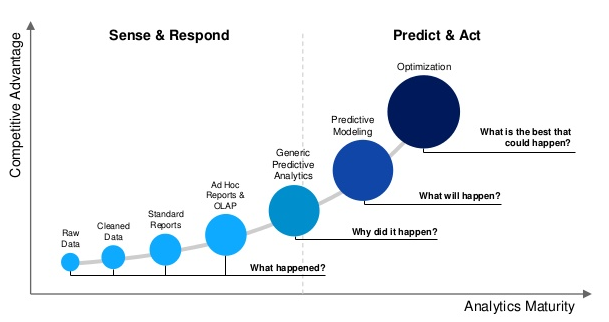Telematics technology continues to advance, improving the ways fleet managers track mobile assets, monitor driving behavior, collect and interpret data, and more.
According to The Gartner 2021 Market Guide, the worldwide use of telematics is expected to increase steadily at approximately 25% per year. Further, according to a recent survey performed by Automotive Fleet, only 30-40% of the fleet market uses a telematics product in the United States. There’s still many fleets that have yet to benefit from this technology.
As transportation mobility technologies continue to develop, business owners must take advantage of emerging advancements in the industry to maintain a competitive edge. With the help of technology, you can take your mobile operations to the next level of performance.
The market for transportation mobility technology has seen exciting developments that make it easier for fleet operators to reduce fuel consumption, monitor driver safety, meet compliance regulations, and capitalize on data analytics.
The Future of Fleet Telematics: Top 5 Trends
Telematics is expected to continue to grow rapidly and be a vital tool for all modern fleet operations, making it easier for companies to cut expenses, improve driver behavior, comply with regulations, and increase efficiency.
The top 5 emergent telematics trends that will enhance modern fleet operations are listed below:
1. Automated Task Management
Automation will play an integral role in the future of fleet telematics. While automated workflows are currently available, many businesses have yet to implement them, so they continue to be a highly-anticipated part of the future market.
Automated workflows will draw from your current fleet management system and initiate responses to critical events. These workflows can manage your business processes and forms, which increases workplace productivity, employee engagement, and reliability.
Many telematics platforms only offer automated workflows for specific scenarios. However, Tourmo’s Workforce Operations provides flexible and adjustable automated workflow capabilities. The AI-powered platform delivers high-quality results and will transform the way you handle business processes.
2. Artificial Intelligence
AI technology provides solutions for complex problems, allowing companies to solve large scale data problems in practical ways. Robust AI-driven solutions and predictive analytics make it possible to perform maintenance before costly issues occur and anticipate future changes in driver behavior to mitigate road risks.
Many companies have invested heavily in advanced technologies to improve their business processes. However, these companies will not be able to attain their full operational potential unless they use sophisticated AI tools to evaluate data effectively. For this reason, AI technology is expected to be a critical part of fleet management in the future.
3. Open Platforms with Modern Technologies
While some telematic’s providers have reservations about the idea of open platforms, these platforms are expected to increase in popularity. Simply put, the primary benefit of an open platform built on modern technology is the ability to get data in and out.
From a consumer perspective, open platform systems allow a customer to have full, unfiltered access to the data generated by their vehicles. Additionally, as the fleet industry grows and evolves, open platforms will allow customers to customize and scale their operations.
4. Analytics Maturity Vs. Competitive Advantage
Most companies use analytics to drive their business decisions, but they’re likely limited in how they access and interpret data across their organization and broader industry sources.
The future of fleet telematics is about having your data reveal and answer complex problems of “Why did it happen?” and “What will happen?” without much human guidance while also predicting and optimizing outcomes.
Tourmo’s Workforce Operations platform is built on the latest AI-driven technologies capable of doing this, allowing analytics to become a source of competitive advantage.

5. Health, Safety, and Sustainability
Health, safety, and sustainability will remain a significant worldwide responsibility in the future. Vehicles must be efficient and drivers must be protected. Fuel management, CO2 emissions reduction, vehicle maintenance, and route optimization will all play a role in meeting greater initiatives.
The Emerging Future — Partner With Tourmo
In the future of fleet telematics, decision makers will need to embrace new technologies to stay ahead of the curve. Taking advantage of emerging trends can take your company to the next level, allowing you to outperform competitors.
As transportation mobility technology continues to advance, simple techniques of monitoring your mobile workforce may prevent your company from reaching its full potential. Using cutting-edge technology can result in a more productive and profitable future.
Author:
 Jason Gress, Director of Product Management
Jason Gress, Director of Product Management
As Director of Product Management at Tourmaline Labs, Jason Gress is responsible for guiding each step of our products’ lifecycles by focusing on the products and their customers first and foremost. He works to ensure the products meet customers' current and future needs. Jason brings more than 15 years of experience in software Product Management and has launched more than 20 products within the telematics and telecommunications industries. Jason’s professional passion is making technically complicated products easy to purchase, use, and support. He holds a Bachelor of Science in Management Science from Virginia Tech.





